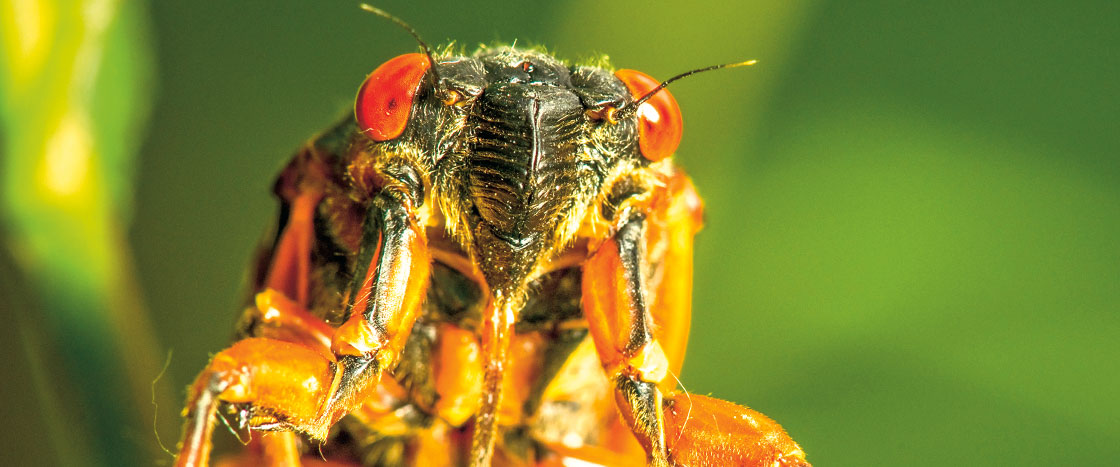I got ready for school like I was getting ready for battle. I pulled on my long pants, even though it was 85 degrees outside, and tucked them into my socks. I put on a baseball cap, even though it was not my style. I tied my sneakers as tightly as I could.
It was time to come face-to-face with Brood X.
What was Brood X? It was the name scientists had given to a group of big insects called cicadas (sih-KAY-duhz). How many bugs are in Brood X? Trillions.
They come up out of the ground every 17 years. And for a month or so, they are everywhere.
They cover the trees. They cling to the grass. They blanket the sidewalks.
You open your mailbox and Whoa! There’s a cicada. You sit in the car and Oh! Cicadas are glaring at you through the window. You have an itch on your shoulder and Akk! It’s a cicada!
And the noise! Some people have said the humming sound they make is louder than a rock concert.
That morning when I was getting ready for school, they were everywhere.
Scientists say the next time they will emerge is spring 2021.
That’s right now.
Brood X is a group of big insects called cicadas (sih-KAY-duhz). How many bugs are in Brood X? Trillions.
They come up out of the ground every 17 years.
They cover the trees and cling to the grass. They cover the sidewalks.
The cicadas are noisy. Some people have said the humming sound they make is louder than a rock concert.
The next time we will see them is spring 2021. That’s right now.
I prepared for school like I was getting ready for battle. Even though it was 85 degrees outside, I pulled on my long pants and tucked them into my socks. It wasn’t my style, but I pulled on a baseball cap. I tied my sneakers as tightly as I could.
It was time to come face-to-face with Brood X.
Brood X is the name scientists have given to a group of large insects called cicadas (sih-KAYduhz). Brood X consists of trillions of cicadas.
They emerge from the ground every 17 years, and for a month or so, they are everywhere.
They cover the trees and cling to the grass. The sidewalks are blanketed with piles of cicadas.
You open your mailbox and Whoa! There’s a cicada. You sit in the car and Oh! Cicadas are glaring at you through the window. You have an itch on your shoulder and Akk! It’s a cicada!
And the noise! Some people have said the humming sound they make is louder than a rock concert.
That morning in 2004, when I was getting ready for school, they were everywhere.
Scientists say the next time they will emerge is spring 2021.
That’s right now.

